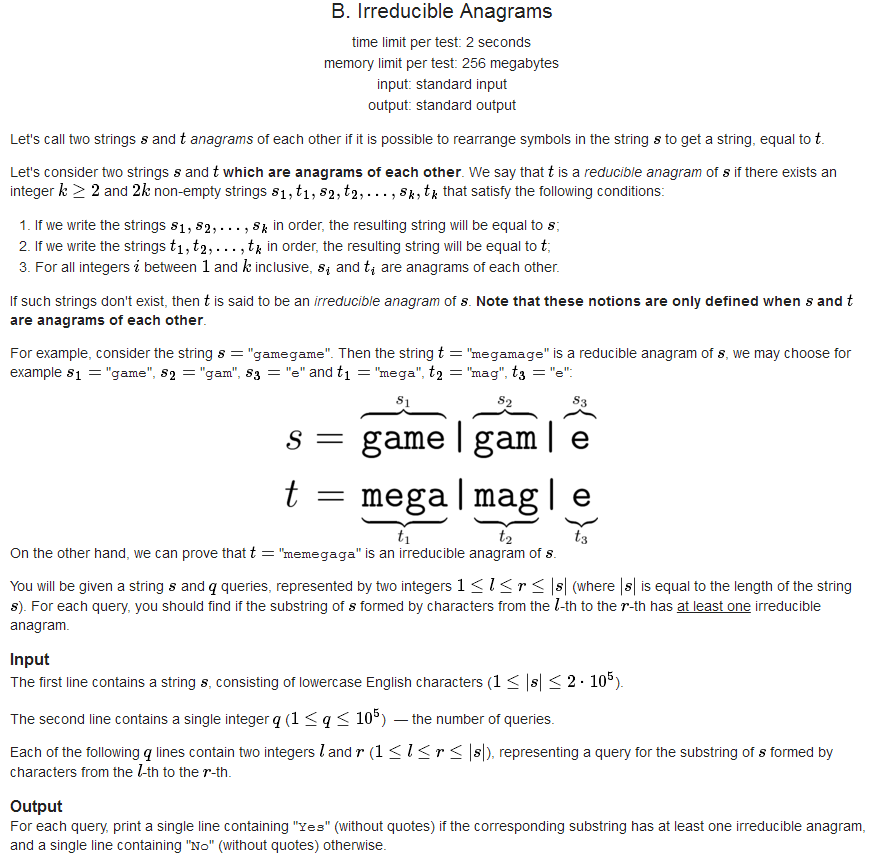

思路:

设tx为t类别字符的个数。
①对于长度小于2的t明显是"YES"
②对于字符类别只有1个的t明显是"YES"
③对于字符类别有2个的t,如左上图:如果str[l] != str[r],那么我们构造的t也应该是str[l] != str[r],且s字串和t的str[l]和str[r]是相反的,即如图所示。继续,如图构造,即bbb..a...a这样,我们发现第一个图片除去str[l] = a和str[r]=b之外,中间怎么放置字符,都会出现"Irreducible Anagrams"的情况,所以"YES"。
④对于字符类别有2个的t,如果str[l] == str[r],如右边的图,总有k = 2,让s1包含一个a和bx个b,s2包含剩余的ay个a使得满足"reducible Anagrams",所以"NO"。
④对于字符类别有3个的t,按着左上的图也无法构造出"Irreducible Anagrams" 情况,说明字符类别为3的t,说明不论字符排列都存在"reducible Anagrams",所以"NO"。
⑤对于字符类别大于3个的t,由④推出是"NO"。
#include <iostream> #include <cstdio> #include <algorithm> #include <cstring> using namespace std; const int N = 2e5 + 10; int dp[30][N]; char str[N]; void solve() { scanf("%s", str); int n = strlen(str); for(int i = 1; i <= n; ++i) { dp[str[i - 1] - 'a'][i]++; for(int c = 0; c < 26; ++c) { dp[c][i] += dp[c][i - 1]; } } /* for(int c = 0; c < 26; ++c) { printf("%c : ", 'a' + c); for(int i = 1; i <= n; ++i) { printf("%d ", dp[c][i]); } printf(" "); } */ int q; scanf("%d", &q); vector<pair<int ,int > > vp; for(int i = 0; i < q; ++i) { int l, r; scanf("%d%d", &l, &r); vp.push_back(make_pair(l, r)); } ///vector<int > ans; for(auto info : vp) { int l = info.first; int r = info.second; int kinds = 0; int sum = 0; for(int c = 0; c < 26; ++c) { kinds += (dp[c][r] - dp[c][l - 1]) > 0; sum += dp[c][r] - dp[c][l - 1]; } ///cout << "tot = " << kinds << endl; if(sum == 1 || (kinds == 2 && str[l - 1] != str[r - 1]) || kinds > 2) { printf("YES "); } else printf("NO "); } } int main() { solve(); return 0; }